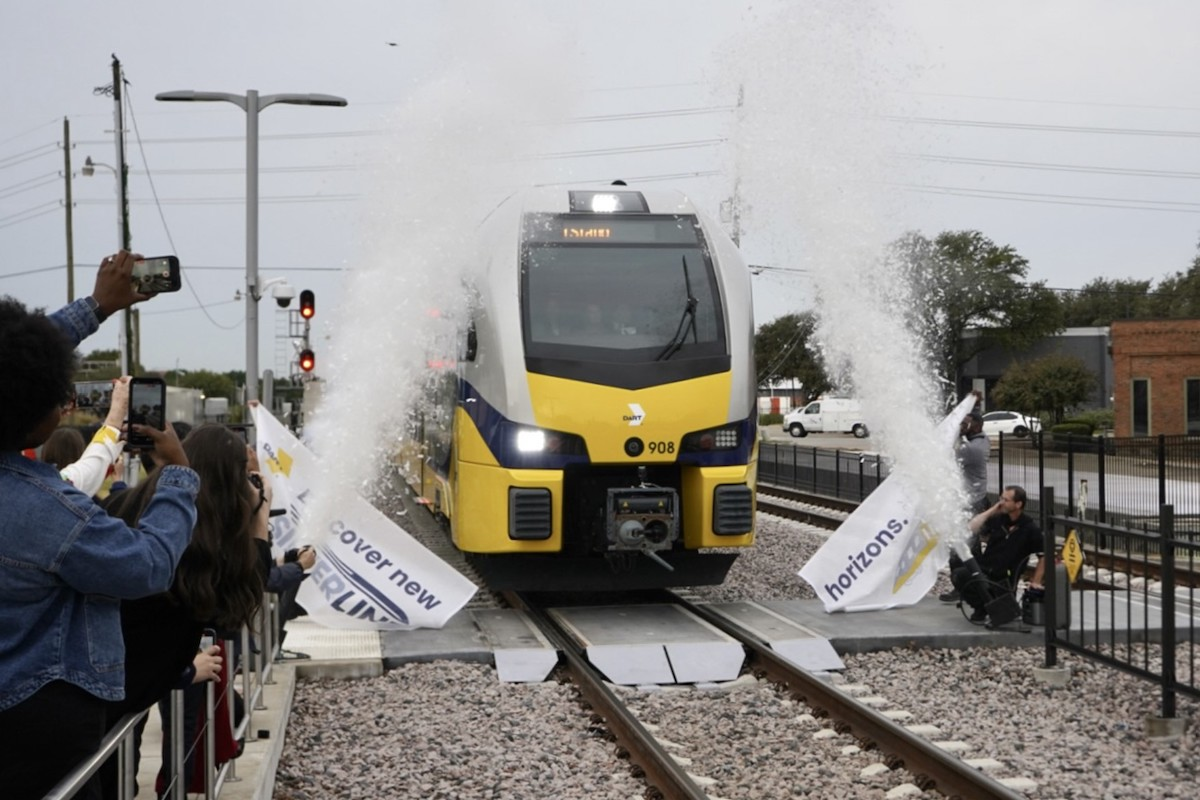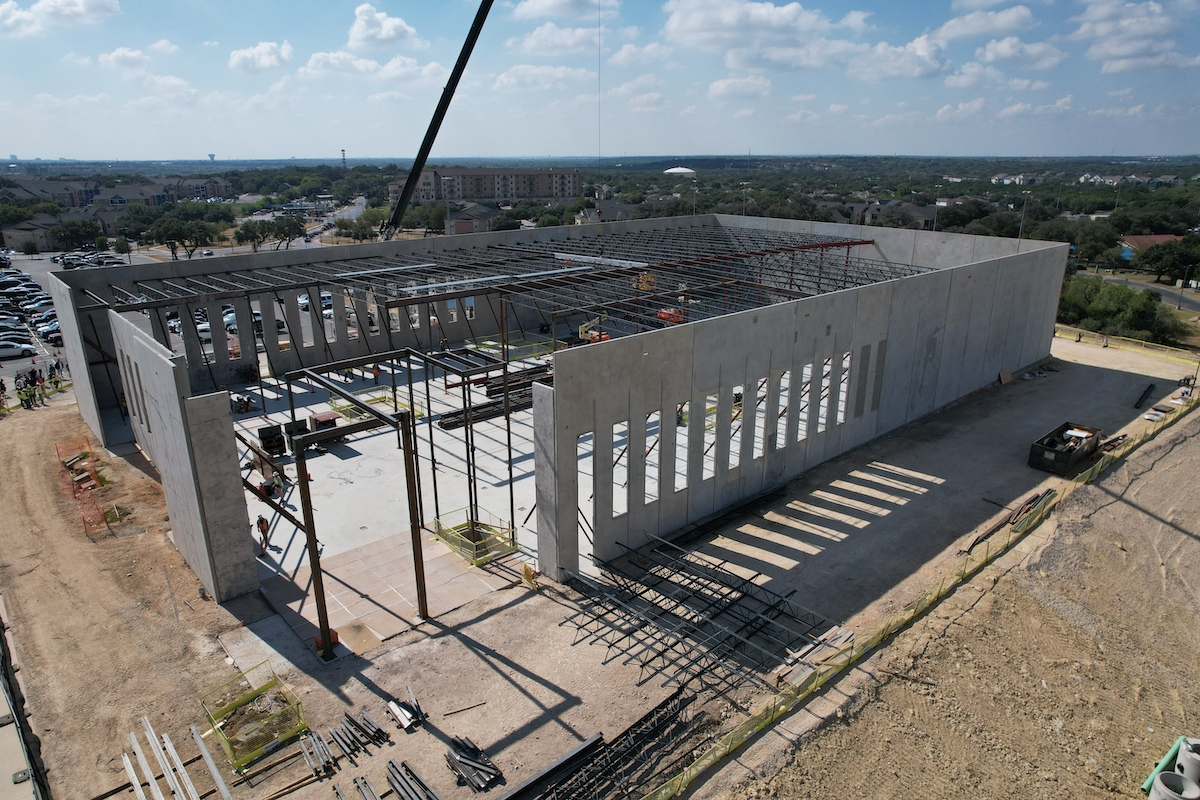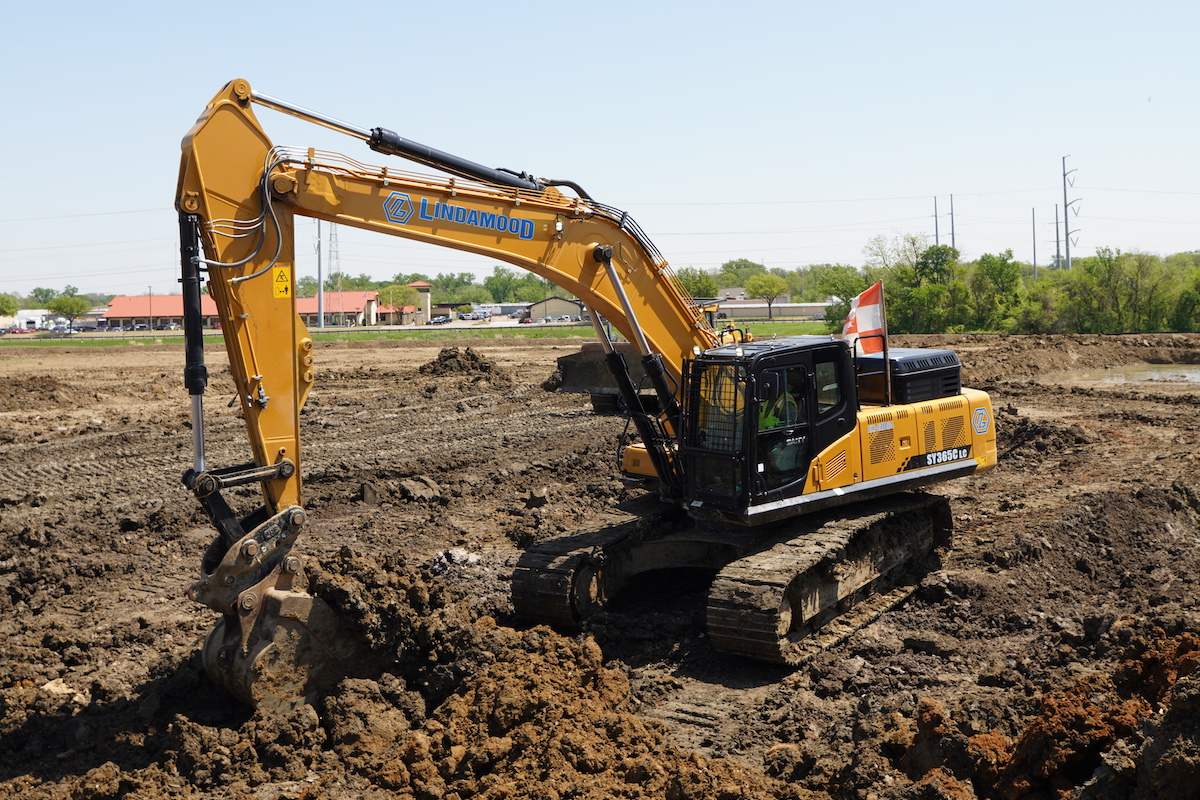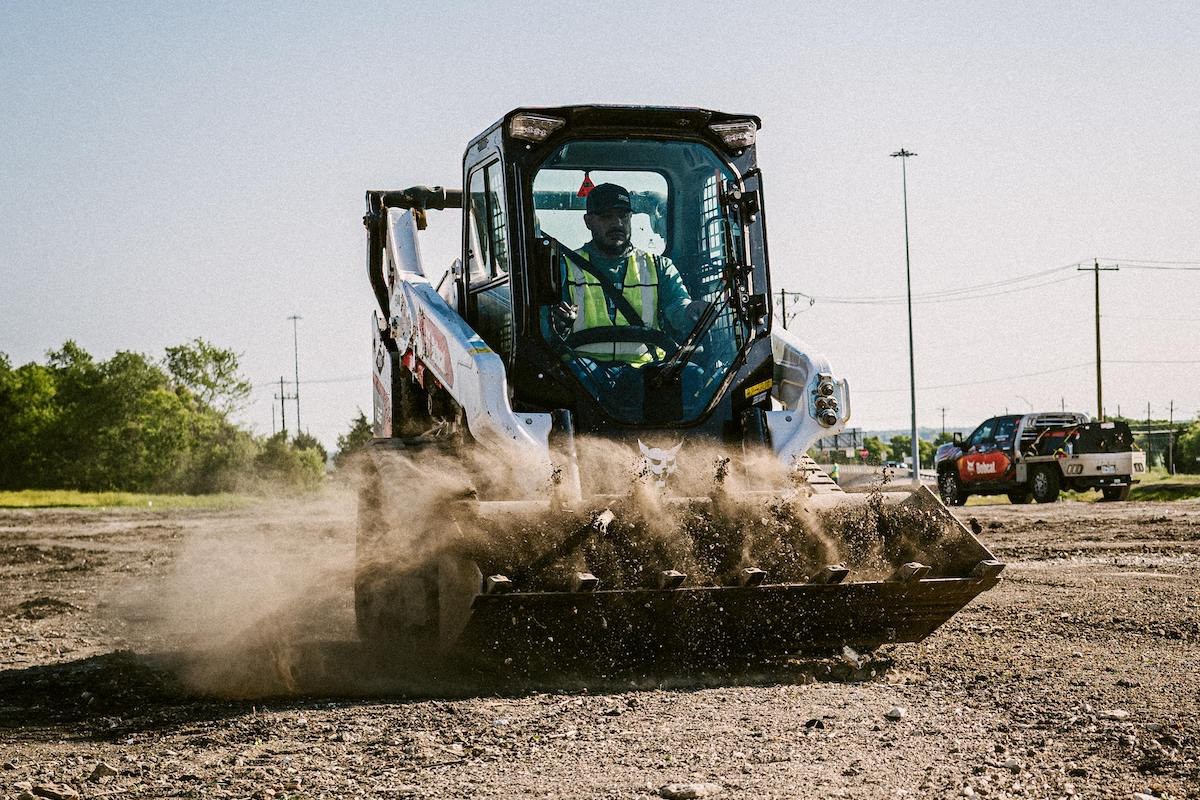The Woolwich contractor has a $16.9 million contract with NHDOT for Project 14749 to replace three 65- to 70-year-old red-listed river bridges on the Highway (Route 16), which traverses New Hampshire’s pristine White Mountain National Forest. The deteriorating bridges carry NH 16/25 over the Bearcamp River, the Bearcamp River Flood Relief Area, and the Lovell River, respectively.
This is the second, and largest, bridge installed by Reed & Reed in little more than a year’s time that utilized Slide-In Bridge Construction (SIBC). In the SIBC process, a new bridge superstructure (deck and beams) is built on temporary supports, usually parallel to an existing bridge that continues to carry traffic. After new abutments and piers have been constructed and the new bridge superstructure is completed, the road is temporarily closed. The existing structure is demolished or removed, and the new bridge is positioned into place on the new permanent supports.
The Bearcamp Relief Bridge was NHDOT’s first use of SIBC, a form of Accelerated Bridge Construction, and it efficiently and safely moved a 168-foot, 1.75 million-pound structure. And it also provided valuable experience for the same crews, who were next slated to build, slide and install Bearcamp River Bridge – a 400-foot, 4 million-pound behemoth.
While Reed & Reed is building the three bridges, subcontractor A.J. Coleman is performing the earthwork for reconstructing 3.4 miles of Route 16 as part of the 14749 contract.

| Your local Volvo Construction Equipment dealer |
|---|
| Romco Equipment Co |
NHDOT’s Construction Bureau is overseeing the project, with key personnel Including Project Manager Jennifer E. Reczek, P.E., and Contract Administrator Chuck Flanders. Domenic Cyr is Reed & Reed’s Project Manager, while Greg Letourneau is the contractor’s Project Superintendent. According to Flanders, the project was about 90 percent complete as of early January 2021.
But while the SIBC procedure was similar for the two bridges, jobsite conditions were markedly different. The weather for the first bridge’s move was uneventful, while the second was impacted by a rainstorm that temporarily transformed the Bearcamp River from a picturesque stream to a raging torrent.
Such variations in flows are common for the Bearcamp River. The 26-mile river is the largest tributary of Ossipee Lake, which is part of the Saco River watershed leading to the Atlantic Ocean. Bearcamp rises up in Sandwich Notch (elevation 1,420 feet) at the northeast end of the Squam Mountain Range, flows to the southeast, passing near the base of the Ossipee Mountains and enters Ossipee Lake (surface elevation 407 feet). During a significant storm, the river picks up tremendous amounts of water in this 1,000-foot plunge to the lowlands.
“Visibility was horrible while it poured all night,” said Letourneau. “We got an inch of rain, and the water level rose about 4 feet very quickly. We demolished the four pier bents, which were made of exposed H-piles with concrete pile caps. We used torches to cut the steel and excavators to topple them over. Then we had the cranes use vibratory hammers to pull out the remaining H-piles like pulling carrots up out of a garden.
“The storm slowed us down and it took us about 12 hours longer to demolish the old bridge than it would have in good weather, but we made up time when the weather improved,” he said.

| Your local Sennebogen LLC dealer |
|---|
| WPI |
| ASCO Equipment |
As demolition was underway, Reed & Reed had built the new abutments and the two new piers. To support these structures, the contractor had driven HP14x89 piles and 30-inch concrete-filled pipe piles about 120 feet to bedrock. Most of this work was completed while traffic continued on the old bridge. And with demolition having cleared away any obstructions, crews were ready to move the completed new bridge into position.
The temporary bents were fabricated of H-Pile “A” frames that also were driven to refusal at about 120 feet. Adjacent A frames were joined together with diagonal steel bracing, and capped with a pair of horizontal W36x260 steel beams. Half-inch steel plates braced the caps. Workers welded channel steel to the top of the steel caps, providing a roller channel for heavy duty Hillman rollers that were used to facilitate the slide.
The demolition and SIBC replacement of the Bearcamp River Bridge was scheduled for an 84-hour window beginning Friday, October 16 at 6 p.m. NH Route 16 was closed to all traffic at the Bearcamp River area. Crews had previously set up the sliding mechanism for moving the new superstructure.
The sliding mechanism consisted of a W14x176 pull beam mounted over the Hillman rollers and a 1-3/4-inch threaded pull rod attached to a 100-ton center-hole hydraulic jack. This equipment was set up at both abutments and both piers.
Jacks were used to lift the new structure off its temporary supports and placed on the sliding mechanism. Next, four 100-ton pull jacks were used to slide the structure over to the new abutments and piers. This 50-foot move was performed in 8-inch increments. When its destination was reached, the structure was again jacked up to allow workers to remove the sliding mechanism and replace temporary bridge bearings with permanent ones. Then the bridge was lowered in place.

| Your local Cementech dealer |
|---|
| Romco Equipment Co |







































































